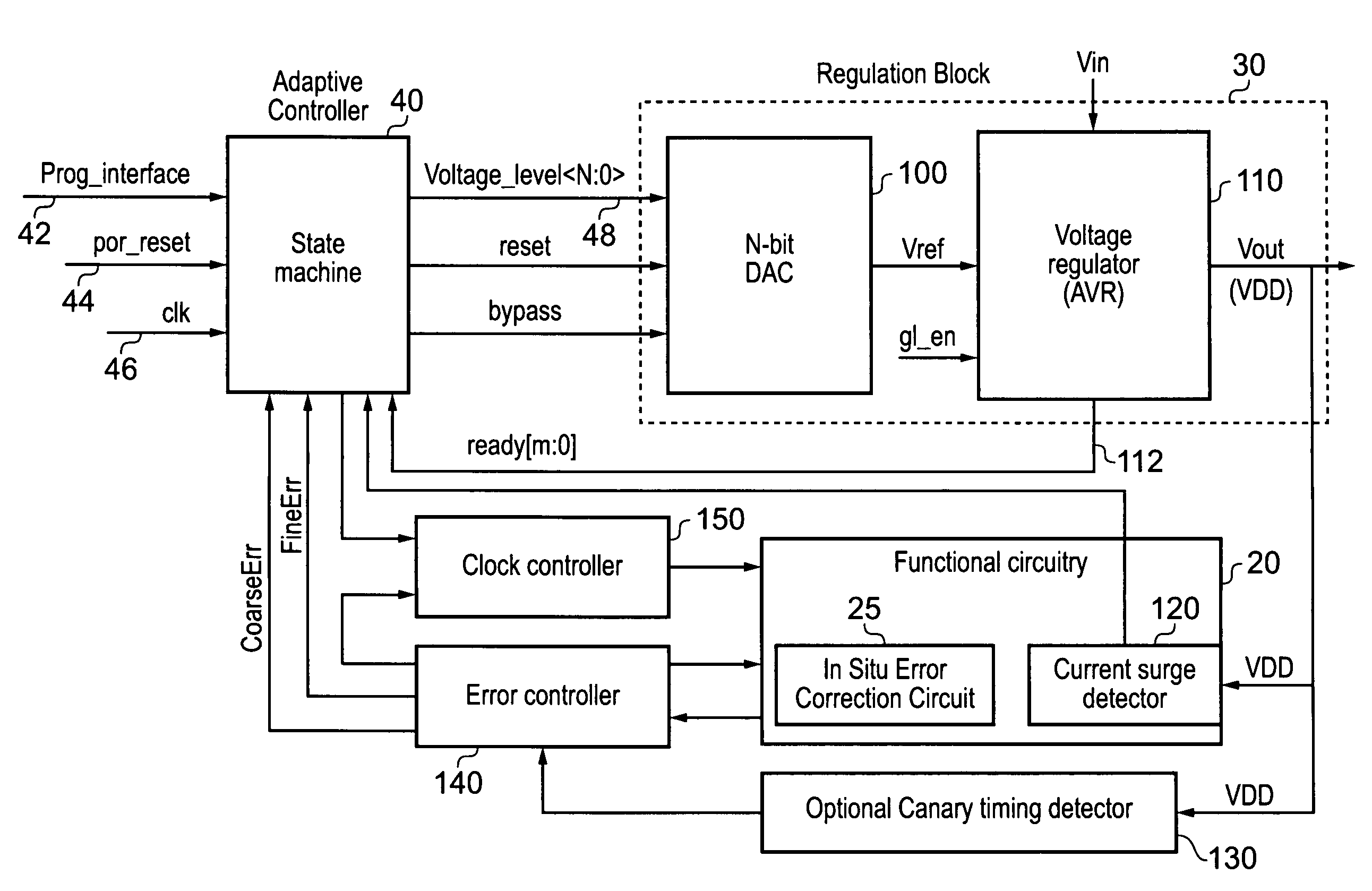Data processing system and method for regulating a voltage supply to functional circuitry of the data processing system
a data processing system and functional circuit technology, applied in the direction of functional testing, detecting faulty computer hardware, sustainable buildings, etc., can solve the problems of reducing the size of the integrated circuit, increasing the power consumption, and increasing the leakage power. the effect of the overall power consumption of the integrated circui
- Summary
- Abstract
- Description
- Claims
- Application Information
AI Technical Summary
Benefits of technology
Problems solved by technology
Method used
Image
Examples
Embodiment Construction
[0053]FIG. 1 is a block diagram of a data processing system in accordance with one embodiment, in this embodiment the data processing system taking the form of integrated circuit 10. Within the integrated circuit 10, functional circuitry 20 is provided for performing the operations required of the integrated circuit. Voltage regulator circuitry 30 is used to provide a variable voltage supply to the functional circuitry 20, with the aim of reducing the voltage level of the voltage supply where possible in order to improve energy consumption of the integrated circuit.
[0054]The voltage regulator circuitry 30 is controlled by an adaptive controller 40 which executes a feedback control signal setting algorithm 45 in order to produce a sequence of feedback control signals which are used to control the voltage output by the voltage regulator circuitry 30. One input to the feedback control signal setting algorithm is a desired error rate 55, which is typically set to be a relatively small, ...
PUM
 Login to View More
Login to View More Abstract
Description
Claims
Application Information
 Login to View More
Login to View More - R&D
- Intellectual Property
- Life Sciences
- Materials
- Tech Scout
- Unparalleled Data Quality
- Higher Quality Content
- 60% Fewer Hallucinations
Browse by: Latest US Patents, China's latest patents, Technical Efficacy Thesaurus, Application Domain, Technology Topic, Popular Technical Reports.
© 2025 PatSnap. All rights reserved.Legal|Privacy policy|Modern Slavery Act Transparency Statement|Sitemap|About US| Contact US: help@patsnap.com



